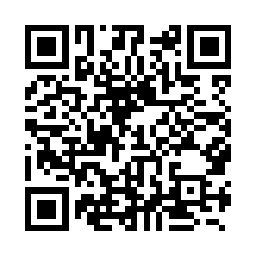
Federal Reserve Act

The Federal Reserve Act was passed by the 63rd United States Congress and signed into law by President Woodrow Wilson on December 23, 1913. The law created the Federal Reserve System, the central banking system of the United States. The Federal Reserve Act was passed by the 63rd United States Congress and signed into law by President Woodrow Wilson on December 23, 1913. The law created the Federal Reserve System, the central banking system of the United States. The Panic of 1907 convinced many Americans of the need to establish a central banking system, which the country had lacked since the Bank War of the 1830s. After Democrats won unified control of Congress and the presidency in the 1912 elections, President Wilson, Congressman Carter Glass, and Senator Robert Latham Owen crafted a central banking bill that occupied a middle ground between the Aldrich Plan, which called for private control of the central banking system, and progressives like William Jennings Bryan, who favored government control over the central banking system. Wilson made the bill one of top priorities of his New Freedom domestic agenda, and he helped ensure that it passed both houses of Congress without major amendments. The Federal Reserve Act created the Federal Reserve System, consisting of twelve regional Federal Reserve Banks jointly responsible for managing the country's money supply, making loans and providing oversight to banks, and serving as a lender of last resort. To lead the Federal Reserve System, the act established the Federal Reserve Board of Governors, members of which are appointed by the president. The 1933 Banking Act amended the Federal Reserve Act to create the Federal Open Market Committee, which oversees the Federal Reserve's open market operations. A later amendment requires the Federal Reserve 'to promote effectively the goals of maximum employment, stable prices, and moderate long-term interest rates.' The Federal Reserve Act created a system of private and public entities. There were to be at least eight and no more than twelve private regional Federal Reserve banks. Twelve were established, and each had various branches, a board of directors, and district boundaries. The Federal Reserve Board, consisting of seven members, was created as the governing body of the Fed. Each member is appointed by the President of the U.S and confirmed by the U.S. Senate. In 1935, the Board was renamed and restructured. Also created as part of the Federal Reserve System was a 12-member Federal Advisory Committee and a single new United States currency, the Federal Reserve Note. The Federal Reserve Act created a national currency and a monetary system that could respond effectively to the stresses in the banking system and create a stable financial system. With the goal of creating a national monetary system and financial stability, the Federal Reserve Act also provided many other functions and financial services for the economy, such as check clearing and collection for all members of the Federal Reserve. With the passing of the Federal Reserve Act, Congress required that all nationally chartered banks become members of the Federal Reserve System. These banks were required to purchase specified non-transferable stock in their regional Federal Reserve banks, and to set aside a stipulated amount of non-interest bearing reserves with their respective reserve banks. Since 1980, all depository institutions have been required to set aside reserves with the Federal Reserve. Such institutions are entitled to certain Federal Reserve services. State chartered banks were given the option of becoming members of the Federal Reserve System and in the case of the exercise of such option were to be subject to supervision, in part, by the Federal Reserve System. Member banks became entitled to have access to discounted loans at the discount window in their respective reserve banks, to a 6% annual dividend in their Federal Reserve stock, and to other services. Central banking has made various institutional appearances throughout the history of the United States. These institutions started with the First and Second banks of the United States, which were championed in large part by Alexander Hamilton. The American financial system was deeply fragmented after the American Revolutionary War. The government was burdened with large wartime debts, and the new republic needed a strong financial institution to give the country a resilient financial footing. Alexander Hamilton and Thomas Jefferson had opposing views regarding whether or not the US could benefit from a European-style national financial institution. Hamilton was in favor of building a strong centralized political and economic institution to solve the country’s financial problem. He argued that a central bank could bring order to the US monetary system, manage the government’s revenues and payments, and provide credit to both the public and private sectors. On the other hand, Jefferson was deeply suspicious of a central bank because, he argued, it would undermine democracy. Jefferson and Southern members of congress also believed that a strong central financial institution would serve commercial interests of the north at the expense of Southern-based agriculture interests whose credit was provided by local banks during the post-revolutionary war era.The First Bank of the United States was established in 1791 chartered for a period of twenty years. The US government was the largest shareholder of the bank. Despite its shareholder status, the government was not permitted to participate in management of the bank. The bank accepted deposits, issued bank notes, and provided short-term loans to the government. It also functioned as a clearinghouse for government debt. The bank could also regulate state-chartered banks to prevent overproduction of banknotes. The bank was very successful in financing the government and stimulating the economy. In spite of its successes, hostility against the bank did not fade. Jeffersonians questioned the bank’s constitutionality. In 1811, the first bank of the United States failed to be renewed by one vote in both the House and the Senate. After the War of 1812, economic instability necessitated the creation of a second national bank. Due to expanding money supply and lack of supervision, individual bank activity sparked high inflation. In 1816, a second national bank was created with a charter of twenty years. Three years later, during the panic of 1819 the second bank of the United States was blamed for overextending credit in a land boom, and would tighten up credit policies following the panic (Wiletnz, 2008).



